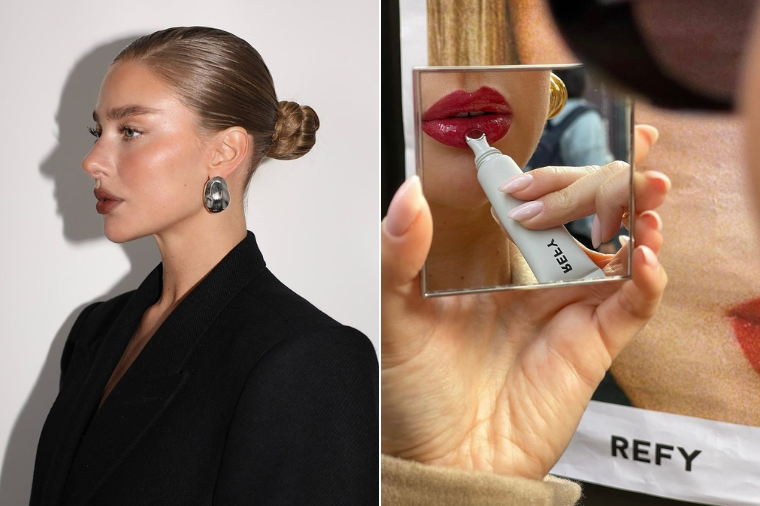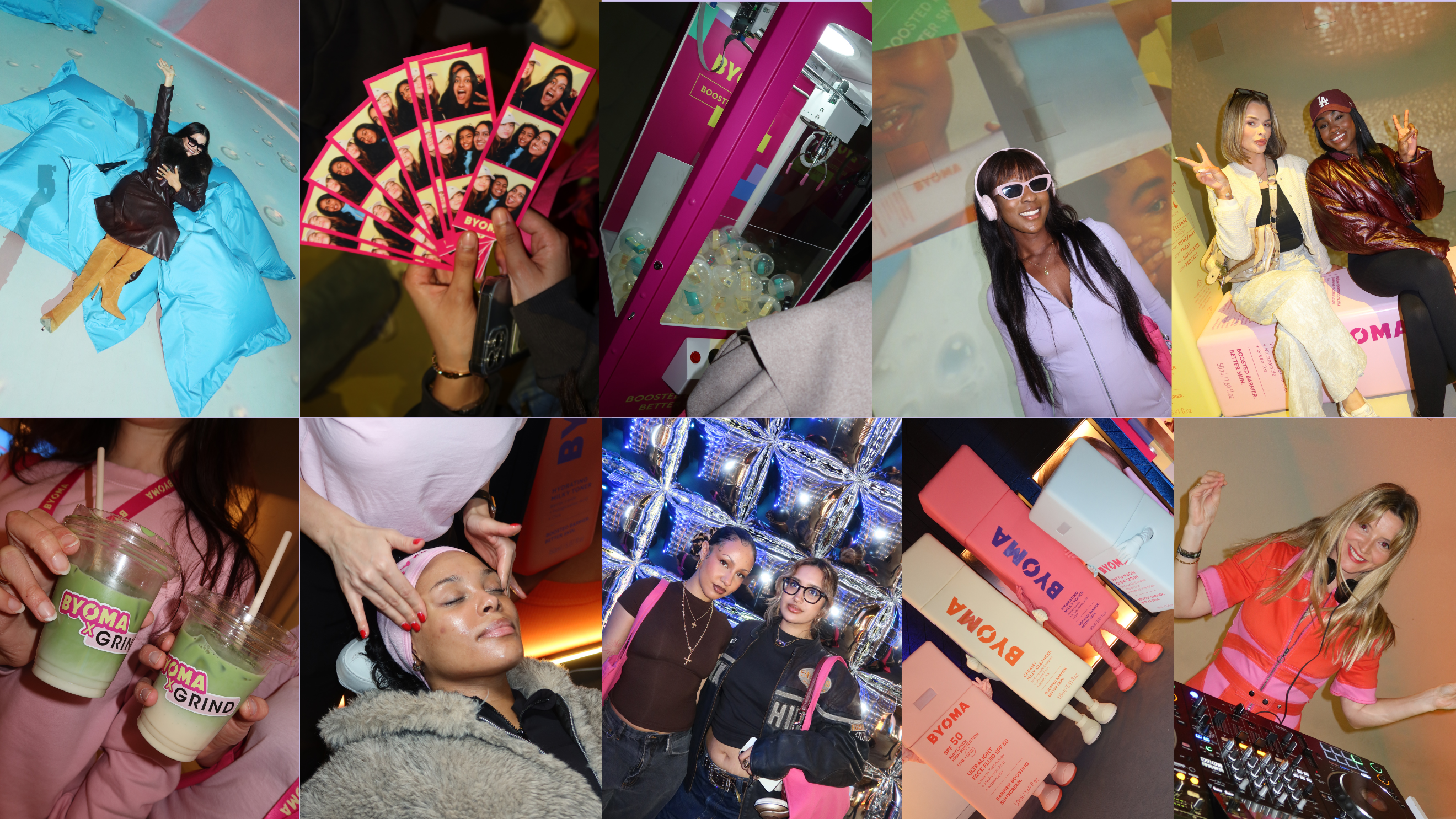Seven habits by disruptor brands that legacy players can learn from

- Watch our full webinar with REFY and BYOMA to learn more essential takeaways for challenger brands.
- Download our Category Challengers Playbook to unlock demographic data in your category to identify whitespace.
According to Bain & Company, brands with less than 1% market share are responsible for 27% of category growth in consumer goods. The shift is real.
In today’s fragmented cultural landscape, you can spot a high-growth challenger brand from a mile away. They enter the arena in a way that’s odd enough to sit up and take notice.
It could be that the bold packaging stands out on supermarket shelves. Or their social media community building is suddenly everywhere you look, tapping into an underground niche.
Specificity is the new mainstream.
But there’s also never been more brands popping up hunting for that airtime. And not just brands either, but influencers, media outlets, internet forums, films, television shows, and basically any other form of entertainment trying to capture your attention.
It's all about making choices — which audiences to prioritise, which channels to invest in — because unlike category leaders, they rarely have the budget to reach the whole market.
This article lays out seven disruptor brand habits learned directly from our webinar with buzzy skincare and cosmetics brands BYOMA and REFY that you can takeaway and apply to your own brand if you, too, want to climb the category ladder.
1. Always start with the problem.
To win in a crowded market, brands need to put their customers front and centre.
According to Ruth McGlynn, Head of Brand Strategy at BYOMA, “It’s about identifying the whitespace from the start. With BYOMA, we were built to address specific consumer concerns and needs.”
The white space BYOMA identified resulted in a bright, bold, colourful brand paired with clinically efficacious formulas. It proved that consumers don’t have to choose one or the other – they can have both.
“It’s about staying true to that no matter what. Remember, you can’t be all things to all people; stay true to your mission,” Ruth adds.
According to Charl Geoghegan, Head of Marketing at REFY, when they entered the market, they knew they wanted a minimal and clean brand with simple and effective products.
“We wanted to provide products that do the hard work and are easy to use. It’s for people who want something simple that works for them.”
The lesson: Swap “what we can make” for “what we must solve.” Tighten the problem, then let it dictate product, positioning and education.
💡Tracksuit’s Category Profile helps brands identify whitespace in the market by seeing which demographics challengers are winning vs legacy competitors.
2. Every day is consumer research.
Let’s face it – where would brands be without the consumers they serve?
Putting community at the heart of research, learning and innovation is one thing that sets challenger brands apart. To them, community isn’t a “campaign” – it’s an operating system.
BYOMA utilises community management to their advantage, channeling their learnings to tailor their efforts across products and beyond.
“We’ve received over a quarter of a million DMs since launch. We use those insights to inform marketing and innovation - every element - because it’s a live sounding board.”
REFY operates with the same discipline. “Designed by you, developed by us” isn’t a tagline; it’s a process. Their Brown Lash shade launched months after Black because the team worked with the community to develop a pigment until everyone agreed it was right.
Insight isn’t a finished exercise. It’s continuous, two-way and real-time.
“Community has been a pillar since launch. Legacy brands sometimes say, ‘This is what our community wants to hear,’ and push a monologue. We’ve made a big effort to turn it into a two-way dialogue. We listen at every touchpoint,” says Ruth from BYOMA.
The lesson: Brands that innovate best stay close as possible to the customer, capitalizing on community channels so they can adapt, think fresh, and pivot when needed. They’re using insights in real-time to get them to where they want to be.
💡 Always-on insights like Tracksuit move at the speed of your marketing, meaning quarterly ad-hoc dips will be a thing of the past. Let your data work harder, so marketing and product can do what they do best: create!
3. Serve, don’t sell.
Challengers build loyalty by serving needs before pushing product.
BYOMA’s first consumer-facing popup at Frameless felt like an art exhibition – a space for consumers to have fun and relax.
The goal was education, play and connection, because understanding today drives discovery tomorrow. BYOMA allowed consumers to step into their world, enhancing brand building.
“We see the customers as an extension of our in-house team. It’s a way to build trust and authenticity. Then, in the long run, you can host IRL events and people show up and engage because they feel part of your brand. They are part of our brand,” Ruth says.
REFY made the same call with its viral Lash Sculpt launch. When virality brought in consumers wanting a heavier finish than the product delivers, the team resisted the urge to go mass. Instead, they doubled down on education – what Lash Sculpt does, who it’s for and how to use it – then re-heroed the story with a Brown shade drop that delighted returning customers.
The lesson: Growth comes from experiences that educate and delight.

4. Considered repetition beats over-creation.
Repetition isn’t boring – it’s brand building.
BYOMA learned the power of repetition through a lesson.
Inside the company, they felt they were synonymous with “skin barrier health.” Outside, many didn’t. The fix wasn’t a new story; it was repeating the right one, consistently, until it stuck.
“You have to be consistent with messaging. As a young brand, you want to move on to the next thing, but you need to pause. Assume everyone discovering you knows nothing, and stick with the message for a considerable time,” Ruth said.
REFY codifies this as “considered repetition”: one core message, tailored by context, at every touchpoint from ATL to the bottom of the funnel. That discipline prevents the all-too-common drift where lower-funnel creative chases CPA and loses the brand.
“We’re guilty of thinking customers see everything we put out. They don’t. It used to be that you needed to interact with a brand 12 times before considering a purchase. In beauty it’s something like 37% more—nearly 20 interactions. ‘Considered repetition’ means repetition in a considered way: same message and push, with tweaks. It also stops us from over-creating,” Charl says.
The lesson: Consistency and frequency of messaging build brands – scattergun assets don’t.
💡Tracksuit’s Recent Brand Activity Recall shows whether your ATL activity is cutting through - helping you track if consistent, repeated investment is really building salience over time.

5. Don’t spread your budget too thin.
One of the biggest mistakes competitor brands can make, according to Jake Higgins, Partner at MNC, is spreading your budget too thin, especially for budgets focused on increasing awareness or consideration.
“Frequency and repetition of distinctive assets over time with concentrated spend, is going to give you a better result,” he says.
Balancing reach and frequency is crucial for challenger brands.
The lesson: Concentrated spend wins = don’t waste budget whispering everywhere. “Better to own London than whisper to the nation,” says Jake.
💡 Tracksuit believes it’s important to meet consumers where they are, by understanding where people spend the most of their time – which is why we recently launched our Media Consumption Page, to allow brands to focus media spend on the right channels, killing spread-thin budgets forever.
6. Bureaucracy kills boldness.
Is speed a headcount problem or a leadership choice? Are your teams having to pause at red tape or jump over hoops to get creative signed off?
If your delays are policy-based, then this is what you should do: Remove layers, tighten briefs, and give the people closest to the work authority to act.
“Remove (sign off) layers. Find a way for people to pitch ideas, even assistants. That’s where a lot comes from. It’s collaborative teamwork,” says Charl.
“Empower people, especially social teams. Let them post on channels without a crazy approval process. That’s one channel where you can remove layers and see results,” says Ruth.
7. Clarity builds alignment.
To make sure the whole team is on the same page, you need to share the same language.
Alignment won’t just happen overnight – it needs to be systematic. A brand bible and always-on data keeps everyone rowing in the same direction.
BYOMA anchors their efforts with one source of truth.
“Have set documents: brand bible, brand codes, brand DNA. Those don’t change. Establish and get them right from the start. Your team will refer to them when you’re not there. It’s important to have that foundation and leadership clarity,” say Ruth.
That alignment and stability gives everyone – from product to social – the confidence to make calls quickly.
💡 Tracksuit is your marketing team’s source of truth. It surfaces the few metrics that matter most, in a simple dashboard. Unlimited seats mean everyone - from marketing managers to your agencies to execs - is on the same page.



